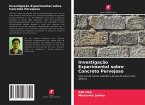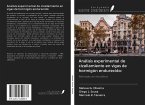The usual approach for the study of gravity waves in laboratory experiments is to use linear wave tanks, with wave generators as wave source and artificial beaches that act to brake and reflect waves. Such an experimental setup gives rise to two issues: no information about wind-wave interactions is achieved and, above all, the boundary conditions determine an inhomogeneous distribution of forcing. The main purpose of our work is to overcome these problems through the design and development of an annular hydrodynamic tank, with air fans as wind source and deflectors to convey the wind over the water surface. In the first two chapters we describe the theoretical background concerning the surface gravity waves and mention the theoretical predictions concerning the capillary waves; once the analytical and statistical description are presented, we focus on the experimental work: in chapters three and four we explain how we have designed and developed the experimental setup and describe the measuring instruments.
Bitte wählen Sie Ihr Anliegen aus.
Rechnungen
Retourenschein anfordern
Bestellstatus
Storno








